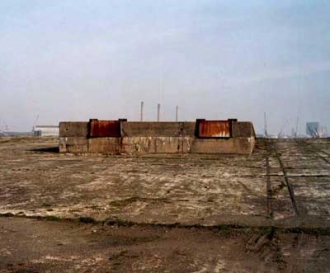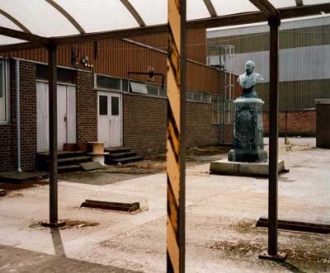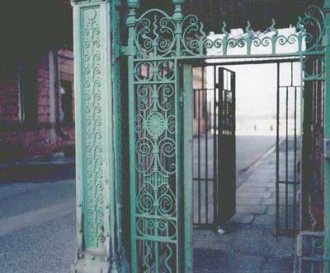About The Exhibition
The River Lagan cuts through Belfast allocating the west bank of the city to Co. Antrim and the east to Co. Down. In 1840 the Lagan was straightened and the spoil was used to create a 17-acre landmass, later named Queens Island. In 1867, five years after the formation of the Harland & Wolff resident shipyard, Queens Island was connected to east Belfast. Titanic Quarter Ltd is a company set up to redevelop the almost redundant 185-acre shipyard site on Queen's Island. As part of the government backed Regional Development Strategy, the Titanic Quarter plan aims to create up to 10,000 jobs and attract £400m in investment over a 10-15yr period. Planning applications have been submitted and the first building in a £40m science park was opened in May 2003.
Accompanying the expansion of industrial capital from the 1850s, Belfast became a significant manufacturer of ships. Harland & Wolff built many (often dramatically named; Statendam, Pericles, Aragon, Laurentic, Suevic, China, Oronsa, Iroquois) ships of note. 75,000 images of this maritime history form the Harland & Wolff Photographic Collection currently housed in the Ulster Folk and Transport Museum. Photographs produced by R. J. Welch and W. A. Green make an impressive record of navel engineering through the shipyard¹s industrial zenith in the early part of the 20th century.
In October 2002, German photographer Kai-Olaf Hesse initiated Topography of Titanic; an extensive photographic survey of Queens Island sites related to the making of the Titanic; the historic marks, remaining buildings, and suggestive blanks left by rapid demolition and transformation. The images will be presented in the context of an oral history sound installation collated by artist Ruth Graham. Employees of Harland & Wolff and individuals from the Ulster Titanic Society, Ulster Folk & Transport Museum, Ulster Museum and Titanic Quarter Ltd have contributed anecdotes, recollections and general information about the shipyard and its history. A reading room/reference area shall also accompany the show.
Kai-Olaf Hesse studied photography and communication design at the University of Essen and HGB in Leipzig, Germany. Previous projects include; 67/89 Images without Place; AfterImages from America Washington, Detroit, Los Alamos, Los Angeles; Landing Zones: Social Landscapes of DDay and Industrial Garden Realm, published by the Bauhaus Dessau Foundation. He has exhibited and is represented in museum collections internationally.
The Artists
Kai-Olaf Hesse
Acknowledgements
Topography of Titanic was supported by Belfast Exposed Photography, Institute of Foreign Relations (Germany), Community Relations Council, NI Arts Council and Belfast City Council.










